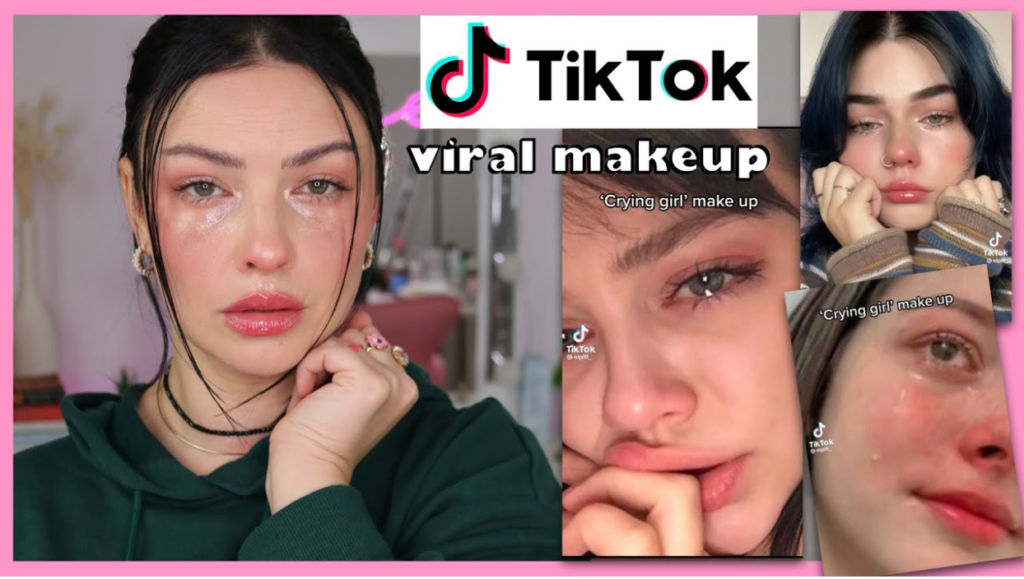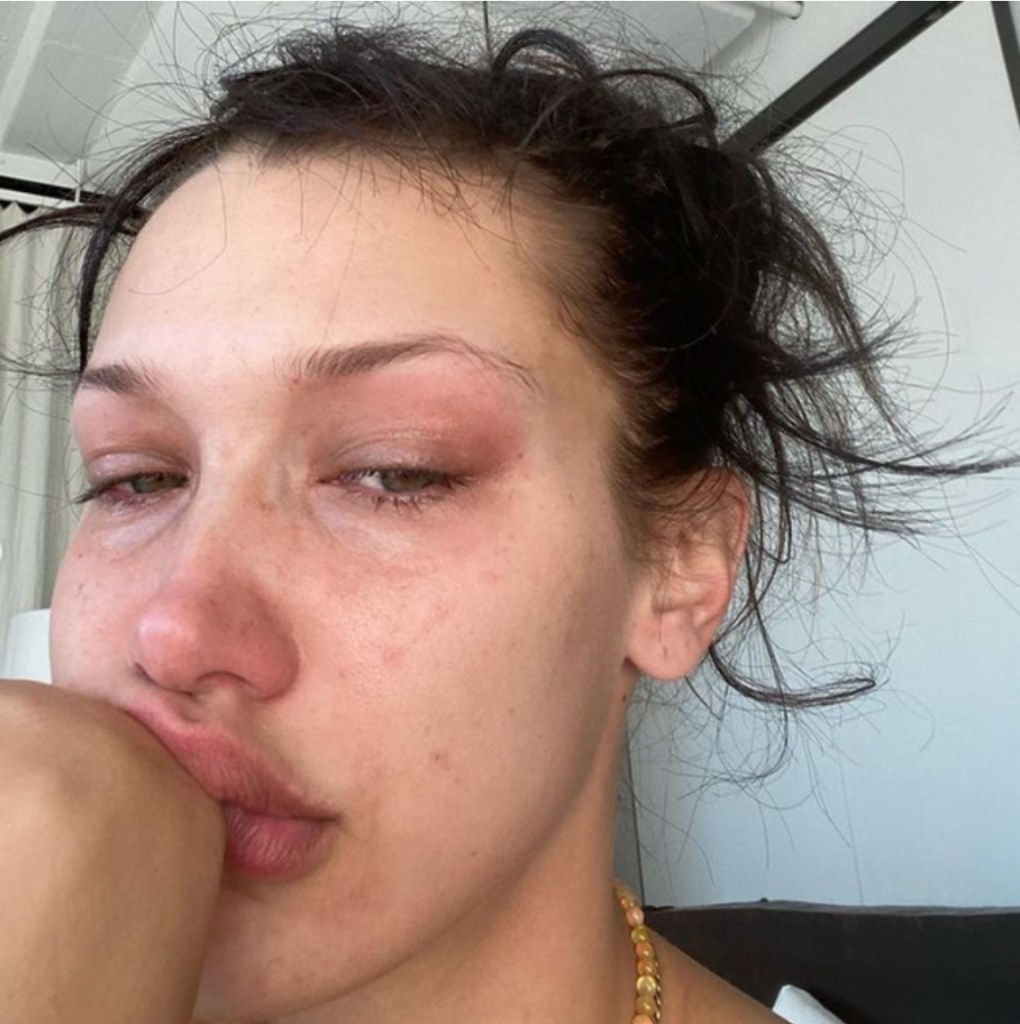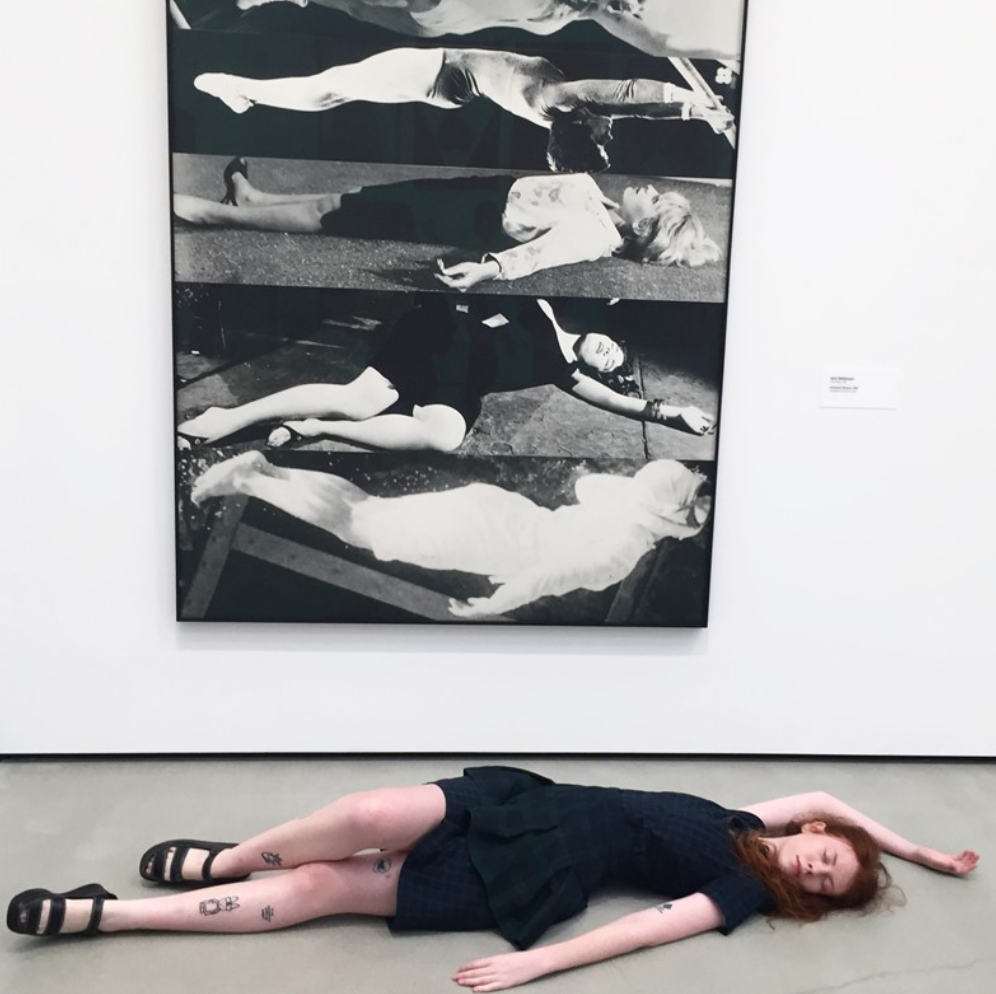![]()
Though always in need of vast improvements, the beauty industry is far progressing by moving towards a more inclusive perception of beauty. Inclusive beauty is becoming the “bare standard” for the industry. By taking close attention to previously marginalized segments of the market, beauty brands and companies are beginning to provide products that are more gender-neutral, inclusive to a variety of skin undertones and body shapes.
Crying Girl Makeup Trend

The aforementioned shift of perception came along with countless trends revolving themes around authenticity, self-love, and embracing realness of self in order to address a better “self-esteem boosting” mechanism among everyone, especially young women. One among those trends was initiated by Zoe Kenealy, a TikTok beauty influencer whose videos reached 130 million views on the platform. Kenealy posted a video on TikTok explaining how to recreate a crying face with makeup products and called it the “Crying girl makeup look”. She suggested that people achieve a really “good look” after they cry. The swollen pinkish hue on the lip, teary look, puffy and glistening eyes, the makeup is made in order for people to look like they just had a “fresh sob”.
Contrary to the old trend of concealing signs of crying with makeup products such as concealer or bright eyeshadows, the “Crying Girl Makeup” trend celebrates vulnerability in a distinctive fashion. In a recent portrayal of the notion, supermodel Bella Hadid posted a series of selfies on her Instagram account revealing her “post-crying” face. Hadid wrote in her lengthy caption “Sometimes all you’ve gotta hear is that you’re not alone. So from me to you, you’re not alone. I love you, I see you, and I hear you,” as a reminder that what is constantly being portrayed in social media don’t always align with reality and there is no shame in the concept of being vulnerable.

The internet forum couldn’t help but circle back to Audrey Wollen – an American writer, critic, and artist – who came up with the term “Sad Girl Theory” in 2014. She obtained a substantial amount of attention through her theory that emphasized on public display of sadness, especially of women, as a symbol of rebellion against the patriarchal stereotype of women’s passivity, submission, and oftenly shamed emotional experiences. Wollen believed that being sad and vulnerable is not a singular experience therefore should not be repressed nor characterized as weakness.

Source via https://www.dazeddigital.com/photography
Simply put, sadness and anguish is considered autonomous, articulative and has historically been proven as a “fuel” for women to relinquish their power to fight back against the internalized misogyny during respective periods of time. The main idea is to promote that rebellion does not necessarily have to be external nor loud and “out in the street” as Wollen said.
Criticism and Backlashes
The comment section of the ‘Crying Girl Makeup’ videos are flooded with fragmented opinions from internet citizens about the trend – varying from issues revolving the makeup trend’s tendency toward exclusive skin tone to the insecurity of not being able to achieve the “cute and pretty”. Sonaksi Sharma, from Vogue magazine, wrote that there’s a counterpart to this certain trend where it is seemingly “outrageous and toxic” to amplify the idea that one has to look decent or pretty even while facing mental health hurdles. The number of views and comments on Kenealy’s TikTok post demonstrating the ‘Crying Girl’ makeup tutorial signify how large her audience is and the unprecedented danger that comes with it.
Fredrika Thelandersson, author of 21st Century Media and Female Mental Health, studies online cultures and its relation with gendered mental health in Western media. She stated that the main issue with TikTok and current ‘Crying Girl Makeup’ is that it not only glorifies trauma and anxiety but also escalates the idea that showing vulnerability is somehow “profitable”.
The idea of attaching authenticity to being sad will unwittingly dilute the importance of medical or psychological discourse since the society is continuously exposed to the idea of staying relevant or “jumping in the trend”. Especially in a landscape where mental health struggle conversations are slowly acquiring its place in the public discourse, ‘Crying Girl Makeup’ has the potential of fetishizing sadness and anxiety.
Putting an End to the Dispute
As a way of putting an end to the dispute, the ‘Crying Girl Makeup’ trend can be seen merely as a way of expressing oneself. Regardless of the meaning and intention, this trend is perceived as another form of creativity among many makeup and beauty enthusiasts due to its experimental techniques. Though it is important to stress that there is no standardized way of “how to cry” or even the responsibility to look decent when one is facing mental health struggles. Mental health issues are still faced by many and therefore should be acknowledged accordingly and provided with safe space, both online and in real world settings.
Reporter: Arindha SyakiraPenulis: Arindha Syakira
Editor: Fareez Eldacca
Sumber Foto:


